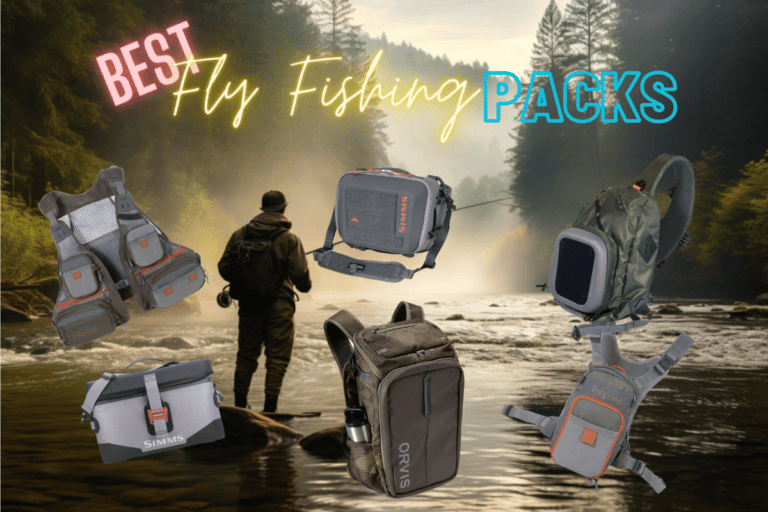Fly Fishing VS Baitcasting in 2023 (In Simple Terms)
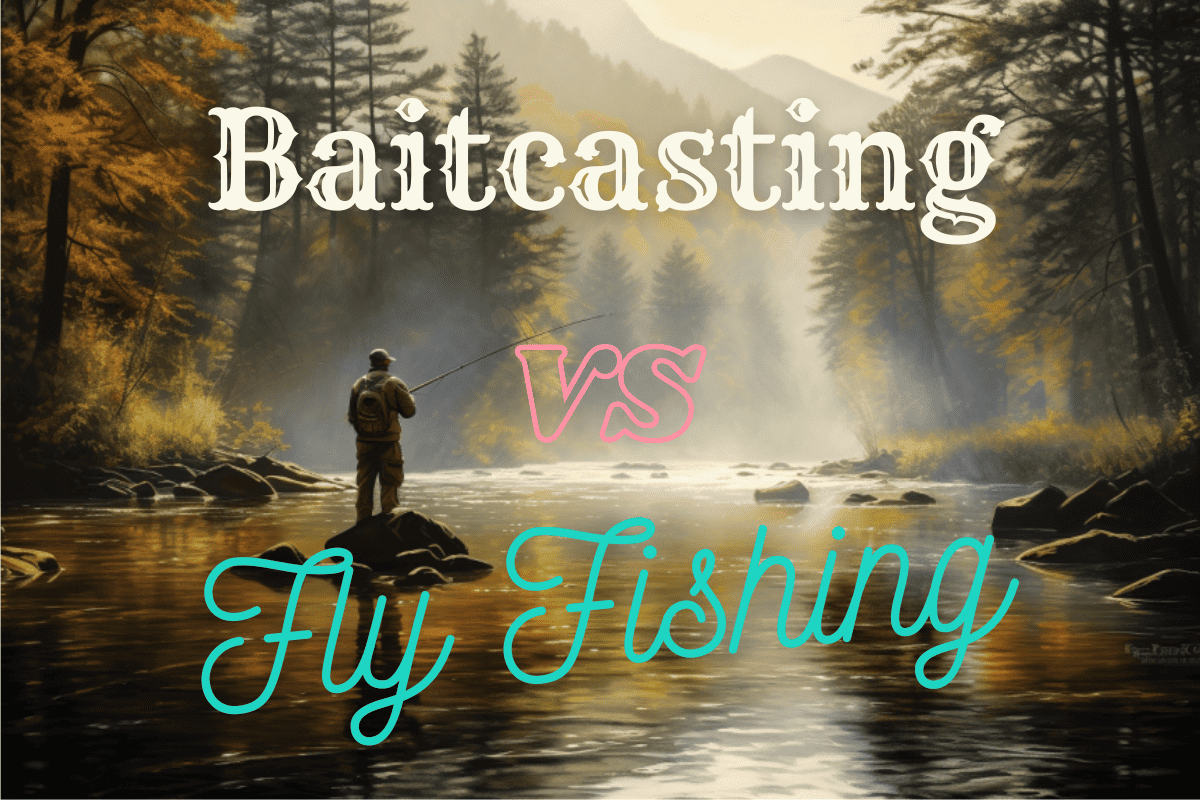
You’re standing by the water, rod in hand. But are you fly fishing or baitcasting? Each has its thrill, techniques, and favored species. But which one’s for you?
We’re about to dive into everything you need to know, from gear differences to catch rates. So, whether you’re a seasoned angler or just dipping your toes, let’s reel in the facts.
Fly Fishing VS Baitcasting: A Comprehensive Comparison
Let’s delve into a comprehensive comparison between fly fishing and baitcasting, and it’s going to help you understand which technique’s best suited for your fishing adventures. You’ll soon be part of a community of anglers, equipped with knowledge and a sense of belonging.
Let’s start with fly fishing. This method relies on the weight of the line to carry the fly to the target. You’ll use a fly rod, which is lightweight and flexible, enabling you to cast light artificial flies with precision. The fly rod’s design allows you to present your fly in a natural way. It’s perfect for fishing in rivers and streams, where catching trout or salmon is your goal. Fly fishing demands a certain level of skill and practice, but the satisfaction of mastering the technique is part of the thrill.
On the other hand, baitcasting uses a heavier line and a baitcasting reel. This method focuses on casting the lure, allowing you to reach greater distances. It’s a preferred technique for targeting larger species in deep waters, like bass or pike. Baitcasting might seem a bit tricky at the beginning due to the risk of backlash, but with practice, you’ll gain control and accuracy.
The difference between fly fishing and baitcasting lies in the equipment used, the casting technique, and the targeted species. Both methods offer unique challenges and rewards. So whether you’re casting a fly rod in a serene stream or hurling a baited hook with a baitcasting reel into the deep lake, you’re part of an angling tradition, a community that appreciates the art of fishing.
Techniques and Working Principles of Both Methods
It’s crucial to understand the techniques and working principles of both methods to choose the one that best fits your fishing style and environment. When you’re weighing up fly fishing vs baitcasting, each method has its own unique advantages.
| Aspect | Fly Fishing | Baitcasting |
|---|---|---|
| Technique | Relies on synthetic flies to mimic natural prey | Uses a baitcaster reel; focuses on casting the lure |
| Casting Motion | Rhythmic motion to build kinetic energy | Overhead or sidearm motion |
| Primary Objective | Mimic natural movement of a flying insect | Versatility in various environments |
Fly Fishing Technique
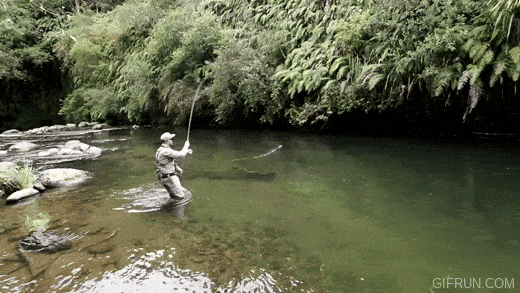
Fly fishing is an art of deception, where you use a fly fishing rod to cast a synthetic fly that mimics the natural prey of fish. Your goal is to trick the fish into thinking your fly is a tasty snack. The key is in the casting, where you use a rhythmic motion to build up kinetic energy, enabling you to effectively cast your line. It’s less about the lure and more about the performance, as you mimic the natural movement of an insect in flight.
Baitcasting Technique
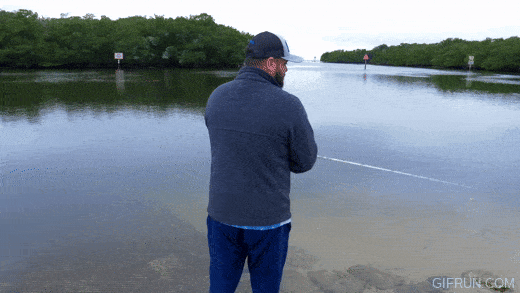
On the other hand, baitcasting uses a baitcasting rod and a spinning reel. The reel sits atop the rod, allowing the spool to unravel in line with the rod. The technique of baitcasting relies on the weight of the bait or lure. You can use either an overhead or sidearm motion for casting. Baitcasting is a versatile method, adaptable to various environments.
In the end, the choice between fly fishing and baitcasting comes down to your personal preference and the environment you’re fishing in. Both methods have their merits and offer you a unique experience.
Target Species for Each Method
Depending on the type of fish you’re angling for, one method might serve you better than the other. It’s not just about fly fishing vs baitcasting, but rather about understanding the target species for each method.
Fly Fishing:
- Trout
- Salmon
- Carp
- Grayling
Baitcasting:
- Bass
- Catfish
- Various other species depending on bait/lure
If you’re a fly fisherman, you’re probably eyeing species like trout, salmon, carp, and grayling. These fish species primarily feed on flies and other water-surface insects. Because of this, they’re more likely to bite at artificial flies that mimic their natural prey. Your fly rod, line, and fake insect are your tools of the trade. You’re not just trying to catch a fish; you’re entering its world, mimicking its food. It’s an art as much as it is a science.
On the other hand, baitcasting offers you a broader palette of species to target. Whether it’s the feisty bass, the elusive catfish, or even the humble crappie, baitcasting has got you covered. You can use various baits and lures to attract a wide range of species. It’s about versatility and adaptability, playing the waiting game, and striking when the time is right.
In essence, choosing between baitcasting and fly fishing depends on your desired catch. Each has its charm, its challenges, and its rewards. So, whether you’re a fly fisherman casting your line in a tranquil river, or a baitcaster waiting patiently by the lake, remember that it’s a shared love for the sport that binds you to your fellow anglers.
Gear and Equipment Differences
There’s a significant difference in gear and equipment when you compare these two angling methods. As you venture into the world of fishing, understanding these differences is key to feeling right at home on the water.
Fly fishing equipment and baitcasting gear aren’t interchangeable; each method has its own unique set of tools.
| Equipment | Fly Fishing | Baitcasting |
|---|---|---|
| Rods | Longer, slimmer, and lighter | Shorter and more durable |
| Reels | Designed for casting weighted line | Designed to handle weight of the lure |
| Lines | Specialized, heavier fly line | Monofilament, fluorocarbon, or braided lines |
With fly fishing, you’ll be dealing with longer, slimmer, and lighter rods and reels. This equipment is specifically designed for casting a weighted line, giving you more control and accuracy. Another unique aspect is the fishing line used. More specifically, the need for fly line, leader, and tippet.
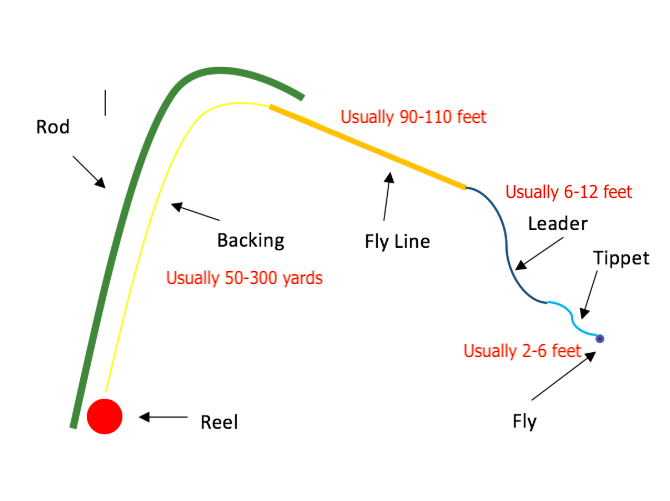
Fly line is a weighted line for casting, the leader is a tapered line connecting the fly line to the tippet, and the tippet is a thin line that attaches the leader to the fly, with each component designed for precise fly presentation and casting.
On the other hand, baitcasting employs shorter, more durable rods and reels. These are built to handle the weight of the lure you’ll be casting. The lines used in baitcasting, whether they’re monofilament, fluorocarbon, or braided, are thinner and less visible than fly lines. This is crucial in baitcasting as it helps to trick the fish into thinking your lure is a tasty meal, not a trap.
So, when considering fly fishing vs baitcasting, remember that the gear and equipment differences are designed to suit the method. It’s not just about the rods and lines; it’s about how they work together in each unique style of fishing.
Pros and Cons of Baitcasting and Fly Fishing
You’ll find that each method has its own set of advantages and drawbacks, which can greatly influence your choice. The decision between fly fishing vs baitcasting isn’t always an easy one. But don’t worry, you’re not alone in this. All anglers, even the most experienced ones, grapple with this choice.
Fly Fishing:
- Pros:
- Easier method for specific fish types
- Better accuracy due to weighted line
- Suitable for both fresh and saltwater
- Cons:
- Expensive equipment
- Challenging to master
Baitcasting:
- Pros:
- Beginner-friendly
- Can catch a wide range of fish species
- Cheaper equipment
- Cons:
- Needs more baits
- Rods can be challenging to control
Fly fishing, for instance, can provide a thrilling experience. It’s more suitable for specific fish types and offers better accuracy due to the weighted line. Plus, it’s applicable to both fresh and saltwater. There’s a sense of camaraderie among fly fishers, a feeling of belonging to a unique group that appreciates the art of casting a fly. However, there are cons to consider too. The equipment can be expensive, and the technique challenging to master. It requires patience, which isn’t everyone’s forte.
On the other hand, baitcasting is beginner-friendly. You can catch a wide range of fish species with a baitcaster. The equipment and baits are generally cheaper, and the rods more durable. It’s a type of fishing that can introduce you to a broader community of anglers. However, you’ll need a larger stock of baits, and the rods can be challenging to control.
Weighing the pros and cons of baitcasting and fly fishing is an essential part of your journey in the fishing world. Remember, it’s not just about catching fish, it’s about belonging to a community, enjoying the process, and connecting with nature. So, don’t rush your decision. Take the time to consider what suits you best.
Factors Influencing Catch Rates
After delving into the pros and cons of baitcasting and fly fishing, you might still be wondering: ‘Which technique will help me catch more fish?’
Let’s shift our focus now to the factors influencing catch rates in fly fishing vs baitcasting. These factors not only provide a sense of belonging but also enhance your angler skills.
- Angler’s skill
- Target species
- Fishing conditions
- Specific method used (fly fishing vs. baitcasting)
First off, let’s talk about the target species. Fly fishing often zeroes in on specific species, which might lead to lower catch rates due to its specialized nature. You’re part of a unique group when you’re fly fishing, often aiming for that one prize catch.
On the other hand, baitcasting is a more versatile fishing technique. It allows you to target multiple species, increasing your chances to catch more fish. It’s like being part of a larger, more inclusive community where everyone has a fair shot.
Fishing conditions such as weather, water temperature, and time of day also play a significant role. These conditions can affect the behavior of fish and, consequently, your catch rates. It doesn’t matter if you’re fly fishing or baitcasting, understanding these conditions will make you feel more connected to the fishing world.
Lastly, your choice of baits and lures is critical. Different species respond to different lures, and your success can hinge on this choice. Whether you’re threading a worm onto a hook for baitcasting or tying a fly for fly fishing, this moment connects you with a long-standing tradition of anglers everywhere.
Cost Implications: Which is More Affordable
Now, let’s dive into the cost implications, considering whether baitcasting equipment or specialized gear would be a more affordable option for you. If you’re on a budget, baitcasting may be the way to go. These types of reels tend to be more affordable than a fly fishing reel, ensuring you don’t break the bank while still reeling in those big ones.
| Equipment Type | Fly Fishing Price Range ($) | Baitcasting Price Range ($) |
|---|---|---|
| Rods | $45 – $1500+ | $25 – $500+ |
| Reels | $50 – $500+ | $40 – $500+ |
| Lines | $60 – $150+ (Leader, Tippet, & Fly Line) | $10 – $150+ |
| Total | $155 – $2000+ | $75 – $950+ |
However, don’t let the initial cost dissuade you from exploring the world of fly-fishing. Yes, it’s true that fly fishing gear can be more expensive due to its specialization, but think of it as an investment. This type of gear can enhance your experience, making every fishing trip more memorable.
Moreover, the cost is only one aspect to consider when choosing the right gear. As you become part of the angling community, you’ll realize that it’s not just about snagging the cheapest gear. It’s about finding what works best for you, what aligns with your fishing style, and what makes you feel like you truly belong out there on the water.
In the end, whether you decide on bait casting or fly-fishing, make sure it’s a choice that suits you. The cost implications are important, yes, but so is your comfort and enjoyment. After all, isn’t that why we fish? To find that moment of joy and belonging as the line tugs and you know you’ve got a bite.
Making the Right Choice: Which Method Suits You?
After considering the cost implications of both fly fishing and baitcasting, the question still remains: which is the right choice for you? This decision, like many life choices, isn’t purely about dollars and cents. It’s about what feels right for you and aligns with your goals, skills, and preferred fishing environment.
When thinking about fly fishing vs baitcasting, an important factor to consider is your skill level. Fly fishing, with its rhythmic and meditative casting, requires more practice to master. It’s like a dance with nature, where precision and timing are key. The pros and cons of fly fishing reflect this. While it offers a unique, immersive experience, it can be challenging for newcomers.
On the other hand, baitcasting is often seen as more accessible. If you’re a beginner or if you’re looking for versatility, you might choose to use a baitcasting rod. Baitcasting allows anglers to cast a wider variety of lures and baits and typically provides greater casting distance and accuracy. However, it also has its own challenges, such as the possibility of a backlash or ‘bird’s nest’ if not properly handled.
In essence, making the right choice between fly fishing and baitcasting is about understanding yourself as an angler. Do you crave the artful challenge of fly fishing, or do you prefer the versatility and straightforwardness of baitcasting? Either way, you belong in the great community of anglers, each with their own preferred method and reasons for casting their line just so.
Final Thoughts
In the end, choosing between fly fishing and baitcasting isn’t a piece of cake. It’s all about what floats your boat.
Consider your budget, target species, and preferred techniques. Remember, practice makes perfect, and the more you fish, the better you’ll get.
So, out of these two, pick the one that tickles your fancy and get ready to have a reel good time!
Frequently Asked Questions (FAQ)
Q: What is the difference between fly fishing and baitcasting?
A: Fly fishing and baitcasting are two different fishing methods. Fly fishing involves using a lightweight fly rod, fly reel, and artificial flies to catch fish. Baitcasting, on the other hand, uses a baitcasting rod and reel to cast bait or lures.
Q: What is a reel in the context of fly fishing and baitcasting?
A: In fly fishing, a fly reel is a device attached to the fly rod that holds the fly line. In baitcasting, the reel is a device that holds the fishing line and is used to reel in the catch.
Q: How does a fishing rod differ between fly fishing and baitcasting?
A: In fly fishing, a specialized fly rod is used which is lightweight and designed to cast the lightweight flies. In baitcasting, a heavier rod is used to handle the weight of bait or lures.
Q: What is a baitcasting rod?
A: A baitcasting rod is a fishing rod specifically designed for baitcasting. It is typically shorter and more sturdy than a fly fishing rod to handle heavier bait or lures and provide more control during casting.
Q: Why do people prefer fly fishing over baitcasting?
A: People may prefer fly fishing for its finesse and the challenge it offers. Fly fishing requires more skill and technique, and many anglers find it more rewarding to catch fish using artificial flies.
Q: What are the casting techniques used in fly fishing and baitcasting?
A: In fly fishing, the casting technique is called fly casting, and it involves using the weight of the fly line to propel the fly forward. In baitcasting, various casting techniques can be used, including overhead cast, sidearm cast, and roll cast.
Q: What are the cons of fly fishing?
A: Some cons of fly fishing include the need for specialized gear, the learning curve associated with mastering casting techniques, and the potentially higher cost of fly fishing equipment.
Q: What are the pros and cons of fly fishing compared to other fishing methods?
A: The pros of fly fishing include the ability to target specific species, the opportunity for finesse fishing, and the challenge it offers. The cons include the need for specialized gear and the learning curve associated with casting techniques.
Q: How do I choose the right method between fly fishing and baitcasting?
A: The choice between fly fishing and baitcasting depends on your personal preferences, the type of fish you want to catch, and the fishing experience you are looking for. It is recommended to try both methods and see which one suits you best.
Q: What are some common terms used in fly fishing and baitcasting?
A: Some common terms used in fly fishing include fly reels, fly casting, game fishing, fishing lures, finesse fishing, and weight of the fly line. In baitcasting, common terms include spinning rod, freshwater, spin fishing, fishing lures, and casting and fly fishing.



